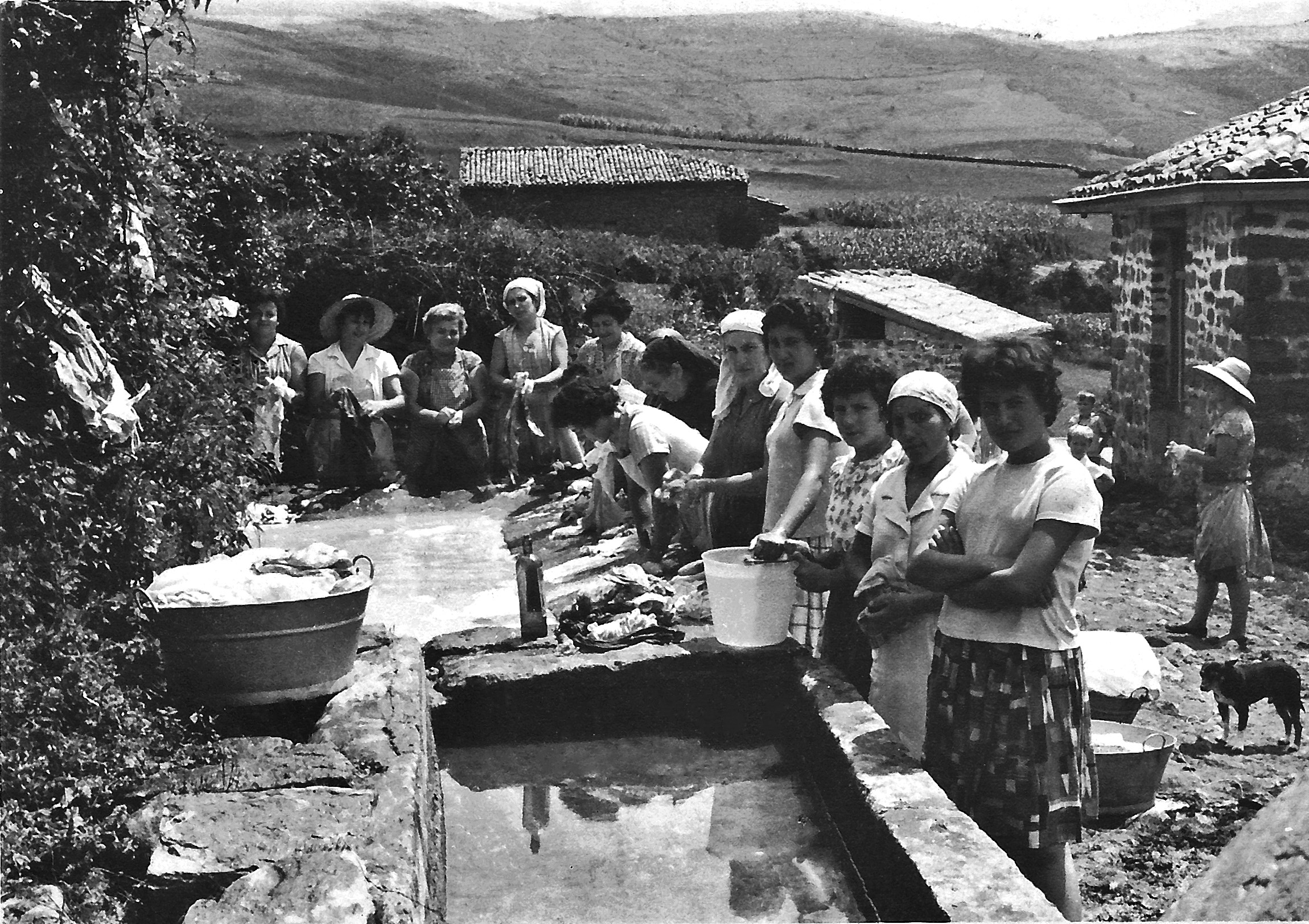Basque ethnography at a glance
The washing machine has been widely believed by housewives to be the most important invention of all devices meant to improve the quality of life in households. Until washing machines emerged and its use spread, things were very different.
White and coloured clothing were laundered separately, whites less frequently than darker fabrics. In the old days laundry was done in the river. Communal washing stones came later and became gathering spaces for women where to receive and share information. Laundering clothes was one of many labour-intensive chores in the home: first, the dirty laundry was taken to the washing place for lengthy soaking, soaping and scrubbing; on the following day it was boiled in large tabs with ashes and hot water; and rinsed on the third day. There used to be washerwomen or laundresses who worked for hotels and rich families on request.
A main stage in laundering (bogadea egin or lixiba jo, in Basque) white and off-white clothes involved introducing the wash in a wooden, later zinc, tub with a drain opening and pouring abundant hot water through a good layer of ash lye until the linens were left bright and glowing in passing. After the introduction of running water in homes, the washing was done in the kitchen sink, using a ridged wooden board, soap and a brush to rub the clothes with. Some time passed before liquid bleach and blue rinse appeared.
The drying of clothes was done outdoors. Household linen was spread to dry on grass in the daylight, as it helped whites look whiter than white. In poor weather wet clothes were hung in the kitchen, the balcony or the loft.
Throughout the 20th century several appliances have been used for pressing cloth smooth, box metal irons being the earliest of them all. Charcoal or wood hot coals were introduced inside the box, and a chimney-like air hole, the reason for them to be called tximinidunak, allowed them to keep smouldering. They were replaced by flat solid metal irons with a handle, or astadunak, heated on a stove. Every household kept two or three irons, one in use and the rest re-heating. Metal handles had to be gripped in a pad or a thick rug to prevent getting burned. For better results, cloth was sprinkled with water (ur-garoa bota) and shirt collars starched to provide the garment with a more polished aspect. Electric and steam irons followed.
Segundo Oar-Arteta – Etniker Bizkaia – Etniker Euskalerria Groups
Translated by Jaione Bilbao – Language Department – Labayru Fundazioa
Reference for further information: House and Family, part of the Ethnographic Atlas of the Basque Country collection.




